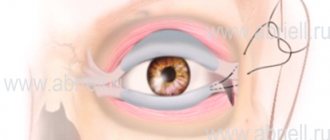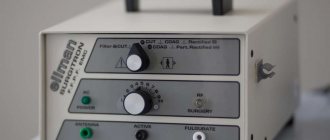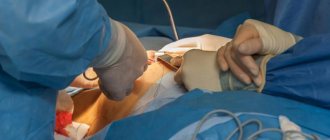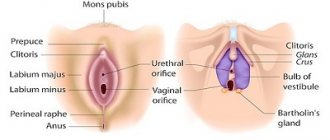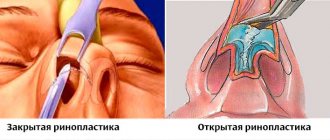How new is this operation?
Indeed, longitudinal (synonyms: reduction, sleeve, tubular, vertical) gastrectomy is a relatively new bariatric operation. I used the word “comparatively” because in fact, longitudinal gastrectomy (LG) is an integral part of the biliopancreatic bypass operation in the Hess-Marceau modification, known in the world since the early 1990s and successfully used in our clinic since 2003. Therefore, we can confidently say that the technical details of this operation have already been well worked out. However, as an independent operation, PRG was first performed in the USA in the early 2000s by M. Gagner et al. as the first stage of biliopancreatic bypass surgery in severely obese patients. The calculation was made to carry out the second, “intestinal stage” of biliopancreatic bypass, in the future, as the preliminary weight loss and improvement of the patients’ condition occurred. It later turned out that in some patients, PRJ turned out to be a completely self-sufficient operation to achieve the desired weight loss. Since that time, and this is only a little over five years ago, PRG began to be used in many foreign clinics, and then in our country, as an independent operation. In our clinic, prostate cancer was first performed as an independent operation in 2004.
Outdated types of operations
Intragastric balloon
This technique refers to minimally invasive manipulations. It is identical in complexity to conventional gastroscopy. Under the control of an endoscope, a special balloon is installed in the stomach, which is filled with 400-600 ml of liquid and remains in the lumen of the stomach, thereby reducing its volume.
The course of treatment is 4-6 months. Cylinders can be reinstalled. Removing the balloon is a slightly more complex procedure that requires anesthesia.
Currently, the use of this type of treatment is limited and is limited to the stage of preparing patients for more serious types of bariatric surgery.
pros
- Non-invasiveness of the technique
Minuses
- Body weight loss occurs within 6 months, then weight gain resumes
Gastric band
This type of surgical treatment is an organ-preserving operation. The essence of the technique is that, under video control (laparoscopically), through small punctures on the anterior abdominal wall, an adjustable band is installed on the stomach, which is made of biologically inert material (silicone), which limits the amount of food consumed.
This is achieved by creating a “small ventricle” with a volume of 5 to 15 ml using an adjustable banding system. After this treatment, the amount of food consumed is reduced several times, and the energy value of the daily diet is 800-1500 kcal.
Currently, the use of this type of surgical treatment of obesity is limited due to its high cost and low effectiveness.
pros
- Controllability of the technique
- Technical simplicity
Minuses
- High price of consumables
- Dependence on the doctor - the need to adjust the bandage in a clinical setting
Sleeve gastroplasty is considered the most accessible and effective method of surgical weight loss. The result after this operation is lasting, the patient’s adaptation to a new model of eating behavior occurs quite quickly. And weight loss occurs gradually, allowing one to get used to a new lifestyle. Modern surgical methods for treating obesity give many people a second life. They help get rid of a huge number of complexes that, like usually accumulate along with extra pounds, arrange your personal life and improve your career. A person gets the opportunity to play sports, easily tolerate physical activity in everyday life, and learn proper eating behavior.
Our clinic has accumulated vast experience in performing various operations in the treatment of morbid obesity. The operation is performed by surgeons with extensive work experience and experience in performing endovideosurgical operations.
Many patients are frightened by the phrase “gastric resection”. How justified are these fears?
Longitudinal gastrectomy is not at all the same resection that is performed for cancer or peptic ulcer disease. With PRG, the lateral part of the stomach is removed, while the important physiological valves of the stomach (cardiac sphincter and pylorus) are preserved, and thus the stomach after PRG remains physiologically quite functional. From a voluminous sac, the stomach turns into a narrow tube, where food does not stay long and quickly passes into the intestinal tract. The secretory activity of the stomach, of course, decreases, but this also plays into the hands of the goal of weight loss.
Resection operations
Sleeve Gastrectomy
Sleeve gastroplasty is based on the restrictive principle, that is, the narrowing of the upper gastrointestinal tract to limit the intake of food.
This intervention has been actively used for about 15 years. This operation has managed to establish itself as a fairly effective method of surgical treatment of excess weight. The operation is performed laparoscopically. The name of this intervention - “sleeve gastroplasty” - quite accurately reflects the essence of the operation, which consists in the formation of an extended narrow gastric “sleeve” to impede the passage of solid food in the area from the esophagus to the antrum (final) part of the stomach. This removes the bottom of the stomach - the area where there are cells secreting ghrelin - a hormone responsible for an increased feeling of hunger. Ghrelin also inhibits the production of its own insulin and contributes to the development of diabetes.
This type of operation in modern obesity surgery is the “Gold Standard”, as it combines high efficiency in losing excess body weight and safety for the patient. Unlike bypass operations, there are no phenomena of electrolyte, vitamin and protein disturbances, and at the same time minimal disturbances of the gastrointestinal tract, allowing, if necessary, to convert the sleeve to other types of operations.
You can also watch a video on the gastric sleeve surgery technique.
More details
pros
- Technical simplicity
- Preservation of pyloric sphincter function
- Removal of the ghrelin-secreting zone of the stomach
- Absence of malabsorptive syndrome
Minuses
- Moderate antidiabetic effect
In what situations can longitudinal gastrectomy be the operation of choice?
Longitudinal gastrectomy can be considered as the operation of choice in patients with relatively moderate excess weight (with a body mass index of 35 to 45), in patients with severe concomitant diseases, as well as in other situations when performing more complex operations is risky for one reason or another reasons. PRG can be offered to patients regardless of age, including adolescents and the elderly. In our country, gastric banding has proven itself well in cases where gastric banding did not produce the desired results.
Losing weight can be easy—almost everyone has done it at least once in their life. It is much more difficult to maintain weight loss over the long term. Patient Olga, who underwent bariatric surgery in November 2019, talks about how to recognize the existence of the problem of excess weight, overcome fear and doubt and make a decision that can change your life and maintain your health.
.
ABOUT ME
Olga, 44 years old, weight 107 kg, height 168 cm. Body mass index 37.94
WHERE IT ALL BEGAN
Over the past 5 years I have gained about 15 kg in weight. After 30 years, in principle, I was no longer thin (for comparison: before the age of 30 and the birth of my second child, my weight was “only” about 68 kg). But the constant weight gain in recent years - from season to season, which was clear from my things - simply began to “kill”.
I have always loved to eat. When you try to cook tasty and plentiful meals for your family, you want to support the gastronomic holiday yourself.
But the growing sides and stomach were not somehow an obstacle until they began to frankly interfere with bending, squatting, standing up, and also walking. Shortness of breath appeared and, as my husband says, snoring.
WHEN DID YOU THINK?
About 3-4 years ago I first tried to go on a diet. It was a protein diet with a lot of chicken and no flour products. To be honest, I sat there for about six months. Gained 3 kg.
Then I began to study my hormonal levels. I visited an endocrinologist and underwent a series of tests. Hormones were normal. Like all internal organs. I was completely upset and desperate. By that time, the solid “hundred” or so was no longer moving down.
A year ago I learned that bariatric surgery* could help. But many things stopped me. In addition, he has a history of 7 surgical interventions, all under anesthesia. I was afraid to add trouble to my body once again.
WHEN DID YOU DECIDE?
On Instagram, I followed the account of a 25-year-old girl who had bariatric surgery (stomach reduction) in July 2019. I began to follow her progress. She turned out to be a very active blogger and shared everything: before and after surgery, well-being, mood, problems, joys, vitamins, exercises, nutrition, etc. But the most important thing is the result! 2 months after the operation she lost 19!!!! kg.
This became a huge incentive for me to urgently solve something.
HOW WAS YOUR FIRST MEETING WITH THE DOCTOR?
The first meeting with surgeon Rinat Rifkatovich Mudarisov** took place in early October 2022. He very clearly explained the essence of the surgical intervention, the risks and benefits, and even drew a diagram of how everything would happen and how my stomach would change after the operation. We talked about my health, about the health of my relatives, about my predisposition to developing diabetes (which I didn’t have yet (!), but the risk was high) and in general about my general condition and mood for changes for the better.
After this meeting, I realized that I even more want to change my life once and for all. And if I don’t make up my mind now, then later this whole story may not happen. I didn’t have enough spirit, strength, and the risk of developing diabetes with growing weight was very high.
HOUR X
The operation was scheduled for the end of November. I had to have a laparoscopic longitudinal gastrectomy. I can’t say that I wasn’t afraid. There was fear of both the anesthesia and the operation itself. And that she might not help, I also thought a lot about this.
3 days before the operation I arrived at the department. I passed all the necessary tests: a general blood test, biochemistry, urine analysis, an ultrasound of the abdominal cavity, an ECG and ultrasound of the heart, fluorography, monitoring of respiratory function, endoscopy. No contraindications to the operation were identified.
The operation was performed in the morning, I woke up in the intensive care unit around lunchtime. The extended epidural anesthesia was still in effect, and I felt quite satisfactory. By morning I was transferred to the surgical ward.
AFTER OPERATION
After the operation I stayed in the hospital for 3 days. By the end of the first day I was able to get up and walk. For the first two days, you could drink a small sip of water every 5-10 minutes; on the 3rd day, low-fat broth was added. I went home with this diet; by the way, I didn’t feel like eating at all. There are 5 small invisible scars left on my stomach.
AT HOME
Out of habit, the volumes of drink and food at the very beginning of a new journey confused me: no more than 100 ml of liquid, no more than 50 g of food per meal. For the first month I ate like this: liquid baby food, water, tea, diluted juices, low-fat drinking yogurt. And only at 3-4 weeks it was possible to introduce pureed food of no more than 50 g at a time. It was possible to drink only 40 minutes after eating, so as not to stretch the stomach.
I immediately started walking a lot, walking on a treadmill, and didn’t break my diet…. And lo and behold! The weight began to melt before our eyes! By week 4 I had lost 12 kg! By the end of the 2nd month, the total weight loss was 21 kg.
2 months after the operation, at a meeting, Rinat Rifkatovich confirmed that everything was going well with me, that I was doing well, and that all the most unpleasant things were behind me, and the new Me was ahead! This attitude cannot but be an incentive for further achievements. It will be even better in the future, I'm sure!
*bariatric surgery is a surgical intervention aimed at reducing the volume of the stomach and accelerating the movement of food through the gastrointestinal tract. As a result of the operation, a person is satisfied with less food and consumes fewer calories, which leads to weight loss and prevents the return of lost pounds. There are several techniques that are used individually. **Rinat Rifkatovich Mudarisov, surgeon, candidate of medical sciences, deputy chief physician of City Clinical Hospital No. 52 for surgical care.
| November 2022 107 kg*** |
| January 2022 88 kg*** |
***Photos are published with the consent of the patient.
Can PRG be considered as an alternative to, for example, gastric banding?
Yes, it is quite. Unlike gastric banding, gastric banding does not leave any foreign material (silicone) in the body. With PG, weight loss begins immediately after surgery, is completed earlier than after banding and does not depend on additional manipulations with the regulated system, but is actually determined by the new anatomy of the stomach. When performing gastric banding, the treatment result does not occur immediately, but only as the system fills, and in the future will depend on how the bandage system functions. Over time, the gastric band, like any equipment, may fail, require troubleshooting, or even replacement. With PRG this is impossible, because no implants are used here. Although, it must be admitted that the gastric banding operation is technically more complex and somewhat more risky than gastric banding. The operation can be performed either openly or laparoscopically. The length of hospital stay is 1-2 days longer than with banding.
What is the difference between PRJ and more complex operations?
Cholecystectomy
- Cost: 100,000 - 160,000 rubles.
- Duration: 25-30 minutes
- Hospitalization: 3 days in hospital
More details
A patient who has undergone pancreatic cancer usually does not require lifelong doses of vitamin and mineral supplements that are absolutely necessary after gastric bypass or biliopancreatic bypass. The likelihood of metabolic side effects (protein, vitamin and calcium deficiency) is also less here. PGC does not require removal of the gallbladder, although if gallstones form in the gallbladder during weight loss, this may be necessary later. At the same time, if we talk about the stability of weight loss, biliopancreatic bypass undoubtedly leads here. Due to the fact that the operation of prostate cancer is relatively young, no one can yet say how stable its results are after 5-10 or more years. Therefore, we warn all patients who are considering the option of longitudinal gastrectomy that if over time the result of PRG turns out to be insufficient, a second stage of treatment may be required - gastric bypass or biliopancreatic bypass. In this case, the second stage will be easier to complete, since the “gastric” stage of biliopancreatic bypass has actually already been completed.
Are postoperative complications possible? What is their probability?
It is impossible to guarantee the absence of complications with any operation. In case of prostate cancer, a staple suture is placed along the entire stomach. Although these sutures are performed using high-quality staplers and are always reinforced, there is still a small risk of postoperative bleeding, as well as failure (cutting through) of some sutures, which in rare cases may require laparoscopic or surgical revision. To prevent suture insufficiency in the first two weeks after prostate cancer, nutrition should be in liquid form, without undue stress on the gastric sutures. Since the operation takes place in the area of the splenic hilum, we always warn that if significant bleeding occurs from the spleen, it may be removed. We also warn about this during other gastric surgeries performed due to obesity.
What is a stoma after intestinal surgery?
A patient's ostomy is a necessary measure to create the opportunity to have a bowel movement. It is used for many surgical interventions:
- after removal of intestinal tumors;
- during reconstructive operations, for faster healing of intestinal sutures and anastomoses;
- in some cases with peritonitis (after trauma, wounds, colitis, diverticulitis, etc.);
- with acute intestinal obstruction, which developed as a complication of cancer, inflammatory processes in the intestine;
- for chronic inflammatory bowel diseases - nonspecific ulcerative colitis, Crohn's disease, ischemic colitis.
How likely is heartburn (reflux - esophagitis) to occur after prostate cancer? How to deal with this?
Firstly, the probability of reflux of stomach contents into the esophagus largely depends on the volume of resection, i.e. the larger part of the stomach is removed and the more the stomach looks like a narrow tube, the less the danger of reflux of gastric contents into the esophagus. Secondly, reflux esophagitis can be effectively treated and prevented with the help of antiulcer drugs (omez, quamatel, ranitidine, pariet, etc.) that inhibit gastric secretion. Such treatment can be prescribed for a period of 2 - 3 months after surgery, and then only if necessary. We are not proponents of additional “anti-reflux” interventions. They are justified only when it comes to large diaphragmatic hernias.
How does the gastrointestinal tract function after gastric resection?
The stomach takes part in hematopoiesis; the cells of the gastric mucosa produce intrinsic Castle factor, an enzyme that converts vitamin B12 from food into an absorbable form. Without intrinsic factor, vitamin B12 is not absorbed and does not enter the bloodstream, but is excreted in the feces. The source of vitamin B12 is animal food; there are no plant sources of B12. For more information about B12 deficiency anemia, read the article in the healthy lifestyle “Red vitamin and anemia (if blood is on a fast ration)” or on the website.
The first blow from food intake is the intestines, primarily the small intestine - this is the most extensive organ of the human digestive system. In it, under the influence of pancreatic enzymes and bile of intestinal juice, the main processes of digestion occur, transforming food into simple components that can be absorbed by the body, determine the state of metabolic processes and, ultimately, human health.
Pancreas. It produces 1.5-2.0 liters of pancreatic juice, which has a pH of 7.5. The main part of pancreatic juice is pancreatic enzymes (trypsin, chymotrypsin, elastase, carboxypeptidases, pancreatic lipase, phospholipases, etc.) Pancreatic juice contains a huge range of enzymes that digest almost all components (macronutrients) of food consumed by humans. These enzymes are produced only in the pancreas. In practice, the pancreas takes over the functions of the stomach in digesting protein foods.
Large intestine - carries out residual final digestion of food, secretion and absorption of water, electrolytes, gases, formation and evacuation of feces.
An important role is played by intestinal microflora, the enzymes of which utilize digestive enzymes secreted by the digestive organs. The breakdown products of enzymes and bile acids are absorbed into the blood and returned to the digestive organs for the re-synthesis of digestive enzymes and acids.
